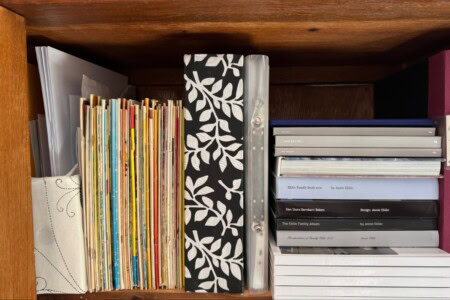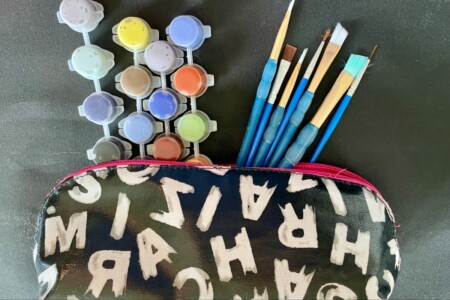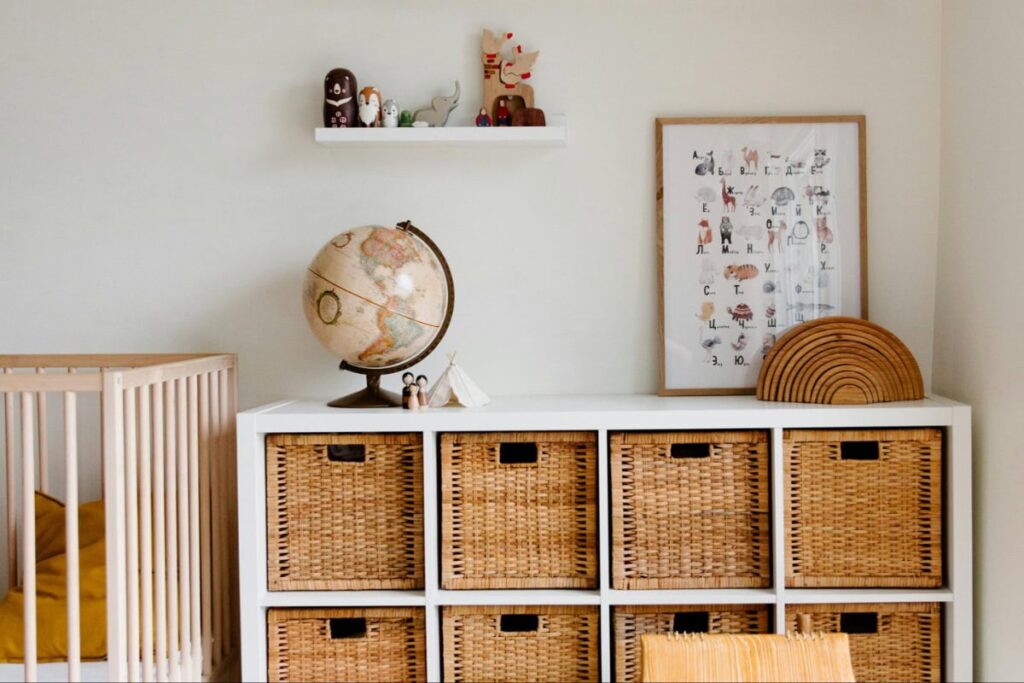Is your child’s bedroom starting to feel more like a chaotic play zone than a peaceful sanctuary? As a parent, the battle against clutter can seem never-ending. But fear not, you don’t have to spend a fortune to create an organized and calm space for your kids. This article explores budget-friendly solutions and creative ideas to help you keep your child’s room tidy and functional. From DIY storage hacks to decluttering strategies, we’ve got you covered. Let’s dive in and discover how to transform your child’s room into a space where both you and your little one can thrive, all while staying within your budget.
An organized space not only looks good but also has significant benefits for children. A clutter-free environment can reduce stress, promote calmness, and enhance creativity by allowing kids to focus on play and learning without distractions. Whether you’re in Dallas, TX, Charlotte, NC, or Garden City, NY, these tips will help you create a functional and enjoyable space for your child.
Decluttering: The foundation of organization
The key to any organized kids’ room is decluttering. Before investing in storage solutions, take a critical look at your child’s belongings. Minimizing the number of toys and items is crucial to managing clutter. Prioritize what your child actually uses and loves, and consider implementing simple decluttering techniques like the “too small” basket method. This ongoing system makes it easy to declutter regularly and prevents items from piling up.
“The most inexpensive tip for organizing your child’s bedroom or playroom is to buy fewer toys. Just like adults, children become stressed and overwhelmed when their spaces are cluttered. Re-allocate those funds to experiences, and only keep toys that they use regularly and love.” – Brittany Rodriguez, owner of B. Beautifully Organized
“Declutter first. This is always the first step to organizing any project is to declutter first. The good news is that it doesn’t cost any money to do this. Once you let go of all the things you don’t need or use anymore, it will be much easier to organize everything that remains.
Look around your home for items that can be repurposed as storage solutions. Shoe boxes, mason jars, baskets, and plastic bins can all be used to organize toys, books, and clothes.” – Malka Rodal with The Organized Fairy
Decluttering isn’t just about getting rid of stuff; it’s about creating space for what truly matters. By curating your child’s belongings, you can ensure that their room is functional and enjoyable. This process helps you identify the storage solutions you actually need, preventing unnecessary purchases. A decluttered room allows children to focus on play and creativity, creating a peaceful and productive environment.
“Create a ‘too small’ basket. Whenever they outgrow something, just toss it in there. It keeps things tidy and makes decluttering a breeze. You can use any bin or basket that you already have.” – Mary Ann with Find Your Gold
“Hands down, the most budget-friendly way to organize your child’s room is to declutter first. Once you know what things you will keep, you can use cardboard boxes covered with paint or contact paper to organize clothing items or cut them down to create drawer organizers. Empty tissue boxes or glass jars can organize smaller items like hair accessories or socks. Involve your child in the process by letting them paint and decorate plastic food containers to store their treasures. And of course, don’t forget to check local thrift stores or Buy Nothing groups for affordable organizing solutions.” – Andrea with the Simplifying Mom Life
Beyond just tidying up, decluttering can also teach valuable life lessons. Introduce the concept of a “donation box” to instill a sense of giving and responsibility in your child. By involving them in selecting items to donate, you can teach them the importance of sharing and helping others. This not only reduces clutter in their room but also fosters empathy and generosity.
Prioritizing safety
Safety is a top priority in any child’s room design. All furniture should be stable and secured to prevent tipping, and sharp edges should be padded or avoided. Electrical outlets should be covered, and choking hazards should be kept out of reach. Prioritizing safety creates a secure environment where children can play and interact safely.
“Safety and organization go hand in hand. Use soft, labeled fabric bins to store toys and essentials — avoiding hard plastic or heavy containers that can tip over. Secure bookshelves and dressers to the wall to prevent accidents, and use childproof latches on storage drawers to keep little explorers from accessing unsafe items. A simple over-the-door shoe organizer can also double as a safe, out-of-reach storage solution for smaller toys and baby care products. Keeping things neat not only saves space but helps ensure a worry-free play area.”- Danny A, founder and CEO of Baby Proof Me
Creative and budget-friendly storage solutions
When it comes to organizing a kids’ room, finding creative storage solutions is key. Upcycling and repurposing everyday items can help you create unique and functional storage options without breaking the bank. Instead of throwing away old items, consider how they can be transformed into organizers for toys, art supplies, and accessories. This not only saves money but also teaches children the value of resourcefulness and sustainability.
The possibilities for repurposing are endless. You can turn dresser drawers into under-bed storage by adding wheels, or use a spice rack on the wall to display small toys and books. Even simple items like mason jars and makeup bags can be repurposed to neatly hold art supplies and small treasures. By looking at household items from a different perspective, you can uncover hidden potential for creating customized storage solutions that meet your child’s needs.

“You don’t want to spend loads of money on storage solutions when you plan to move in the future, yet as all moms know, feeling like your home doesn’t function isn’t something you want to live with either. Decoupage and wallpaper offcuts became my best friends as I endeavored to fix my home on a shoestring budget. I went to work covering old shoe boxes, used office organizational items, cereal boxes, and even boxes I got for free, like the box for printer paper and banana boxes. The weaker cardboard I covered with material my grandmother gave me using decoupage paste. This strengthens the cardboard. I have been using some of these items for 18 years. The boxes with thicker cardboard I covered with wallpaper.” – Annie from The ADHD Minimalist
In addition to the practical benefits, upcycling and repurposing add a personal touch to a child’s room. Each repurposed item tells a story and makes the space feel unique. Involving your child in the process can be a fun and educational activity, encouraging creativity and problem-solving skills. By embracing upcycling, you can create an organized and clutter-free space that reflects your child’s personality, all while sticking to your budget.
“When seeking creative and budget-friendly storage solutions, consider the untapped potential of everyday items. Recycled plastic take-out containers become ideal for organizing smaller trinkets and collectibles, while larger storage chests or even the sturdy boxes from online orders can be transformed into impressive toy storage through paper mache applications, incorporating various textures to stimulate sensory experiences. For a touch of quirky organization, aged books can serve as shelf dividers, color-coordinated to create a visually appealing and defined space.
To encourage artistic expression without the worry of wall damage, utilize leftover molding to frame a section of black chalk paint, creating a designated drawing zone that allows children to freely explore their creativity. If chalk paint isn’t your preference, explore alternative drawing treatments available at local paint stores, providing a unique and engaging artistic outlet.” – Ke Kai Kealoha with Aloha Chicks
Creative space solutions: DIY storage ideas
Maximizing vertical space in kids’ rooms with DIY hanging storage can revolutionize organization. High wall space with cupboards and shelving offers out-of-reach storage for less frequently used items, while hanging closet organizers and tension rods create accessible space for clothes.
Specialized hanging organizers are perfect for organizing dolls, cars, and books, keeping them off the floor and easily visible. Creative DIY solutions like hanging accessories with clothespins or binder clips offer a fun way to display artwork and small treasures, and hanging mesh laundry bags can double as adorable storage for stuffed animals.
“Think ‘hidden storage’ to maximize space without spending a fortune. Repurpose old dresser drawers by adding wheels and sliding them under the bed for toy storage. Use hanging closet organizers for stuffed animals, keeping them off the floor while still accessible. Egg cartons or muffin tins make perfect budget-friendly organizers for small items like Legos, hair ties, or crayons. Lastly, give your child a ‘donation box’ to encourage decluttering — anything they outgrow or don’t use can go to another child in need.
DIY hanging storage with reusable household items. Get creative with everyday household items to organize your child’s room on a budget. Repurpose an old shoe organizer by hanging it on the closet door to store dolls, toy cars, or art supplies. Use sturdy cardboard boxes wrapped in colorful paper or fabric to create stackable storage bins for books and clothes. Even an old spice rack mounted on the wall can become a perfect display for small toys or bedtime storybooks.” – Abel Dominguez, owner of Temecula Valley Junk Pick-Up
“Remember to make use of the high wall space within the kids’ bedrooms, especially for toys and equipment that they don’t need regularly. Wall cupboards from the likes of Ikea, or shelving with storage boxes on can be great, out of the way up high, for things that only have occasional use. This way you are not taking up too much floor or lower level space, that can be better used for everyday things.” – Jennifer Kay, interior designer with The Mini Interior Design Company
“Think ‘dual-purpose decor’ to keep your child’s space tidy on a budget. Repurpose wooden crates as both storage and seating – just add a cushion on top for a cozy reading nook. Hanging mesh laundry bags work wonders for stuffed animals, freeing up floor space while keeping them visible and accessible. And don’t overlook tension rods. Placed inside drawers or bookshelves, they create dividers for organizing clothes, toys, or books without the need for expensive organizers.” – Amber Bowie, founder of Mackenzie Madison of Philadelphia
To further optimize vertical space, consider using adhesive hooks for items like hats, backpacks, and hair accessories. This keeps these frequently used items within reach and prevents clutter. This approach enhances organization and transforms the room into a more functional and visually appealing space. By taking advantage of wall space, you can create a tidy and efficient environment that encourages children to keep their belongings organized.

“Use jars to hold art supplies, and the jars can be decorated as well. Reuse makeup bags for art/craft supplies, Barbie accessories, Lego sets, or items to entertain your kiddo on the go. Hanging organizers, over the door or on the wall, are a great solution for dolls, cars, books, sports gear, etc. Food storage container missing its lid? Use the container in a drawer or a larger storage container to separate the smaller items.” – Sarah Kary, certified professional organizer from Mess to Blessed LLC
“One of my favorite ways to organize a room is with an old bookshelf. Add adhesive hooks to the sides for extra hanging storage (such as backpacks or hats), and use canvas or wicker bins on the bottom shelf for hidden storage for things like crayons, school artwork, etc. If you want to create a personalized touch, attach a corkboard to the side for notes and art display.” –Autum Love,fashion expert and founder of Autum Love
Hidden solutions
Effective storage in a child’s room often involves maximizing space in clever ways. Under-bed storage is a prime example, offering a hidden solution for items that aren’t used daily

